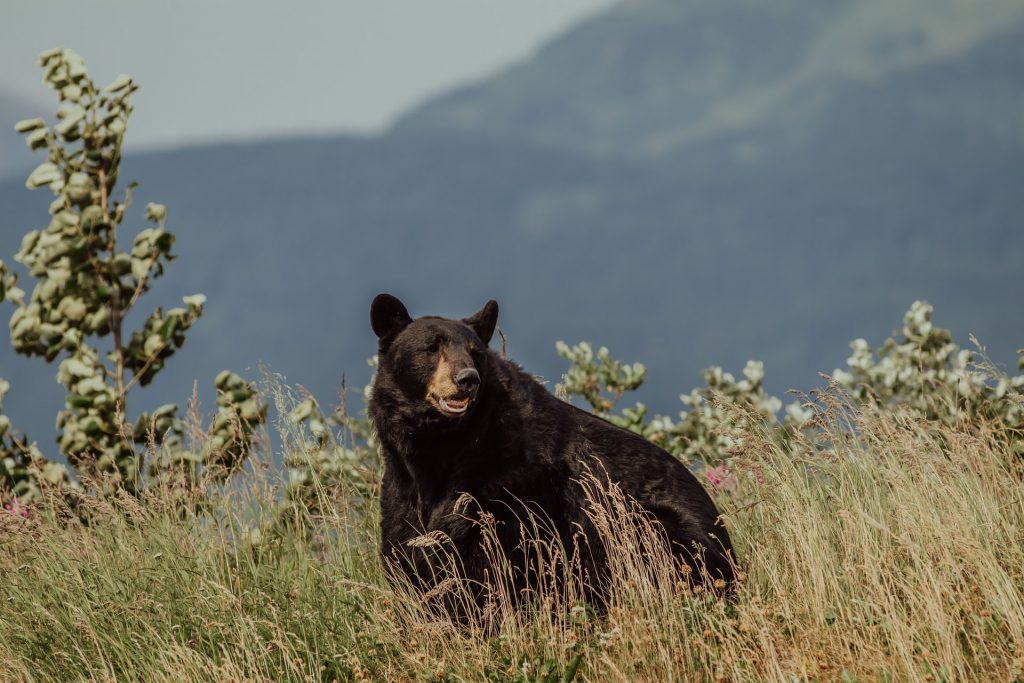

Late autumn is the best time for observing black bears as they are out and about fattening up for the long winter hibernation ahead. If you have a boat, a great place to see black bears is along the eastern shores of the Ucluelet Harbour at low tide. They can be seen turning over rocks in the intertidal zone, looking for snacks of shellfish.
The Thornton Creek Hatchery has become a popular spot for bear watching. In the late fall, as salmon return to the Thornton Creek to spawn, black bears are attracted to the smorgasbord of what must be their favourite food: wild pacific salmon! The hatchery has provided a safe viewing platform for visitors to come and see the salmon and observe the bears. Don't forget your camera!

Photography by Liisa Nielsen
Remember that although these bears might seem docile they are still unpredictable, wild animals and should be treated as such. Never approach a bear and keep a respectable distance from them, especially if they have cubs.
Black bears enter their dens to hibernate in October and November. The spend most of their time prior to that eating and putting on the body fat. They usually hibernate 3 to 5 months in hollowed out trees, in cave, and underneath logs. Unlike other species of hibernating bears, black bears don’t enter as deep of a hibernating state and their body temperature doesn’t drop as much. Since our winters are very mild, they might even wake up mid-hibernation and look for food.
What do they eat? Mostly veggies! Young shoots from trees, berries, fruits, grass, and nuts. It is true that bears love to eat honey and will rob a beehive of its honeycombs if given the chance. They’ll also dine on insects and their larvae (yummy!). Our local bears feast on crabs and shellfish and are pretty good fishers, catching their share of salmon from streams and rivers.
We definitely live in black bear country here in Ucluelet. They can be seen scrounging for berries and crossing logging roads, and often on the side of the highway in the Pacific Rim National Park. Although it is an amazing experience to observe these bears and a wildlife photographers dream, it is important that we keep them ‘wild’ and give them the space and respect they need to continue to survive in co-existence with us.
Read more about bear safety from Parks Canada.
Kind Regards,
The Gray Team